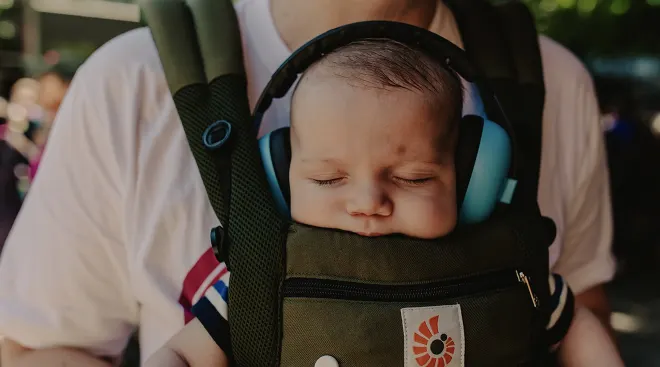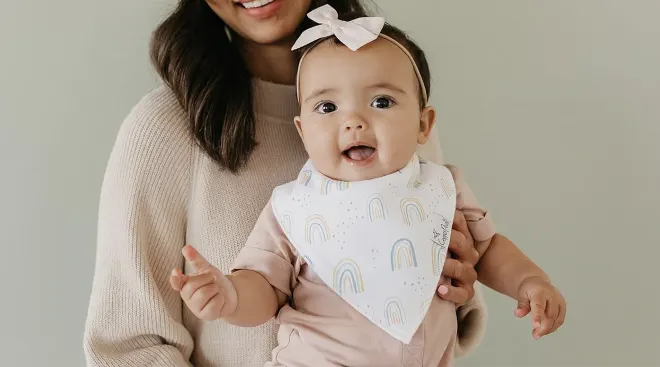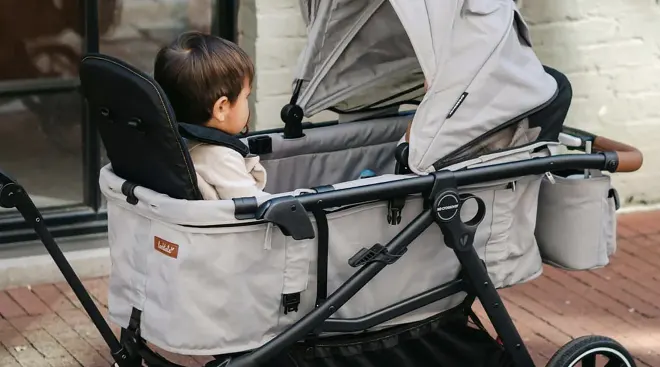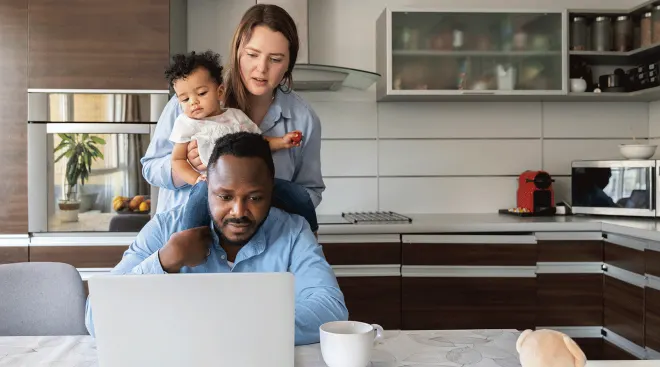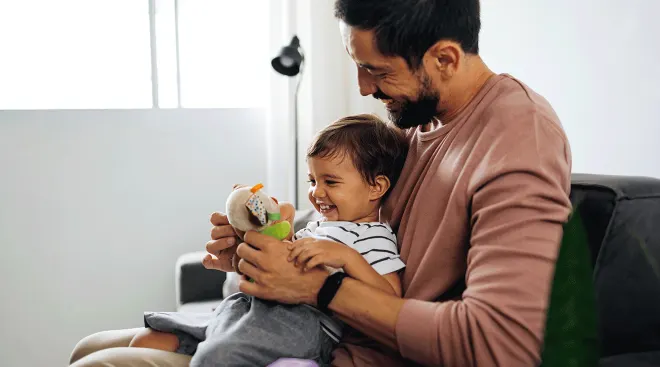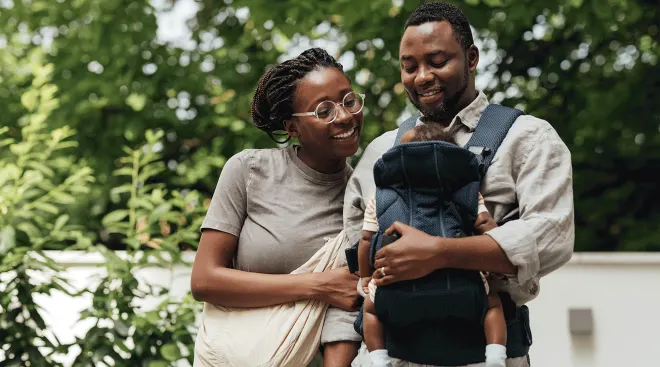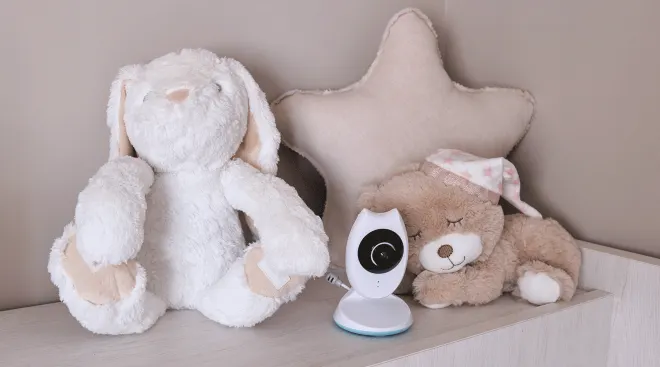Are Baby Loungers Safe?
New parents quickly learn that babies are happiest when they’re being held and snuggled. But, occasionally, you (and your arms) need a break. That’s when you’ll want a safe, comfortable and portable place to put baby. And that’s exactly why infant loungers have enjoyed a meteoric rise in popularity in recent years. But are they safe? In short, they’re suitable for some quality chilling, but should never be used for sleep. Still, some parents appreciate that these cushions give them (and their little ones) a few minutes of respite. So how can you use a baby lounger in a safe way? Here we break down the dos and don’ts.
“No matter what you call baby loungers—docks, pods, rockers, seats, bouncer or nests—they’re all pretty much the same,” explains Harvey Karp, MD, a baby sleep expert and author of the best-selling book Happiest Baby on the Block. “They’re cushioned nests or inclined seats that envelop an infant so parents can use their hands for something other than baby holding, bouncing and carrying.”
Baby loungers certainly come in handy when you need a minute and baby needs a change of scenery (and a comfy spot to hang out). Some even come with an arch and attachable toys for baby’s amusement. It can also serve as a practice place for tummy time.
While infant loungers can be safe in some circumstances, they’ve become a controversial piece of baby gear—and rightfully so. Tragically, these soft cushions have been linked to incidents of infant suffocation.
The Consumer Product Safety Commission (CPSC) is exceedingly clear about the fact that they don’t make for a safe sleeping environment. In 2022, the Commission issued an emphatic warning about using the popular DockATot Deluxe+ lounger in particular—a product that DockATot will be discontinuing.
So what’s the actual danger? “Babies who fall asleep in soft infant loungers can roll onto their tummies or to their sides, which significantly increases the chance of suffocation,” explains Karp. He adds that baby could also turn their head and lean their face into the soft surface. Moreover, a restraining belt could potentially slide up and cut off baby’s airflow.
It’s true that the consequences of letting baby sleep in an infant lounger or using one without proper supervision can be dire. The CPSC notes that between January 2019 and December 2020, there were 254 incidents—including 21 fatalities—related to infant loungers and other flat or inclined baby sleep products.
What to do if baby falls asleep in an infant lounger
Sleep guidelines from the American Academy of Pediatrics (AAP) stress that baby’s sleep space should be firm and free of bedding and other soft objects. Since a baby lounger pillow is essentially a soft cushion, it’s most definitely not suitable for sleep.
That said, sometimes, babies fall asleep unexpectedly. And since infant loungers tend to be enclosed nests, baby may feel a little too comfortable and nod off. It can be incredibly tempting to let them snooze in the lounger, but it’s just not safe. “If baby does fall asleep in the lounger, you’ll need to move them to a crib or bassinet,” says Sandra McKay, MD, an associate professor of pediatrics with McGovern Medical School at UTHealth Houston.
Wondering if you should just go ahead and toss the baby lounger you were gifted? Just because baby shouldn’t sleep in a baby lounger doesn’t mean you can’t ever use one for other purposes. So what can you use a baby lounger for? Simply put, it can be helpful to have a designated place to put baby when you need a breather. Remember, supervision is paramount when it comes to just about any product for baby, and that’s especially the case with infant lounger pillows; parents should remain close by to make sure baby doesn’t fall asleep. As long as you’re sitting close and directly supervising playtime or tummy time, using a newborn or infant lounger pillow is acceptable.
While you’re prioritizing safety, be sure to place your infant lounger on the floor; never use it on an elevated surface, such as a couch or table, to avoid the risk of baby falling.
Of course, there are alternatives to a baby lounger that still offer a place to put baby and give your tired arms a break. Bouncers, swings, activity gyms and playpens all offer a safe designated zone for your little one to hang out in and enjoy.
About the experts:
Harvey Karp, MD, is a pediatrician, baby sleep expert and the author of the best-selling book Happiest Baby on the Block He is on the faculty of the USC School of Medicine and a fellow of the American Academy of Pediatrics.
Sandra McKay, MD, is an associate professor of pediatrics with McGovern Medical School at UTHealth Houston and Children’s Memorial Hermann Hospital, and part of Rice University’s Baker Institute firearm safety program. She is also a fellow of the American Academy or Pediatrics and director of the Pediatric Population Health Initiative at UTHealth Houston. She earned her medical degree from the University of Missouri School of Medicine.
Please note: The Bump and the materials and information it contains are not intended to, and do not constitute, medical or other health advice or diagnosis and should not be used as such. You should always consult with a qualified physician or health professional about your specific circumstances.
Plus, more from The Bump:
Navigate forward to interact with the calendar and select a date. Press the question mark key to get the keyboard shortcuts for changing dates.

































